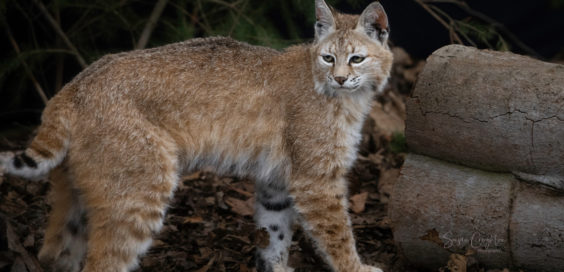
Creature Feature – Bobcats
Posted by Dustin Horton // May 20, 2020 // Articles, Creature Feature
Although bobcats reside in our region, they are rarely seen due to their nocturnal and elusive behaviors. They live in diverse habitats including forests, swamps and brush land. Dens are secreted away in rock crevices, hollow trees and thickets. Most bobcats are roughly twice the size of an average house cat and are named for their black-tipped “bobbed” tails. They are tan-brown with dark patterns across their body and long legs. Their paws are big with retractable claws.
Bobcats are good climbers and can jump up to 12 feet high. They are excellent hunters, mainly targeting rabbits, squirrels and other rodents; they also eat geese, raccoons, reptiles and insects. They compete with fishers for food which leads to battles typically dominated by the bobcat. They can swim well and have been observed catching salmon. Occasionally, they may ambush a small or weak deer. Now and then, bobcats may wander into farmyards and attack poultry or small domestic animals, but this is NOT typical behavior. They rarely attack people and are easily scared off; so if one attacks, it may be rabid.
Solitary and silent most of the year, bobcats socialize during a noisy, polygamous mating season in mid-winter with hair-raising screams, yowls and hisses. This caterwauling is simply part of their breeding behavior. Kittens remain with their mothers for 8-11 months, until they can fend for themselves.
The fur trade nearly wiped out bobcats in some regions. Thankfully, protective regulations were put in place, and today, their populations are stable.
Article by Margie Manthey & Photo by Susan Creighton













